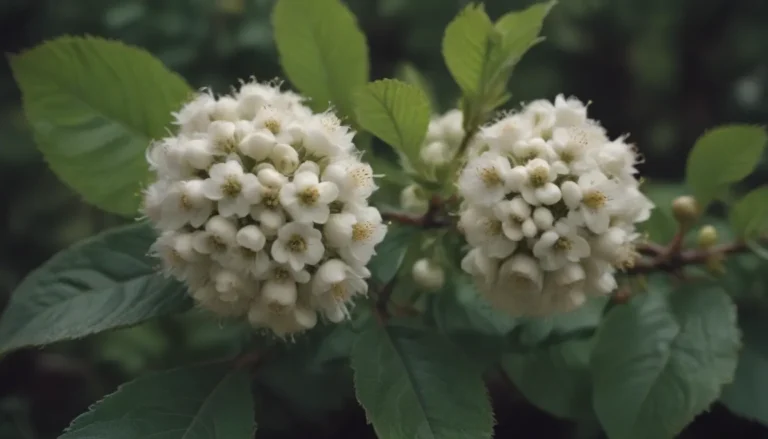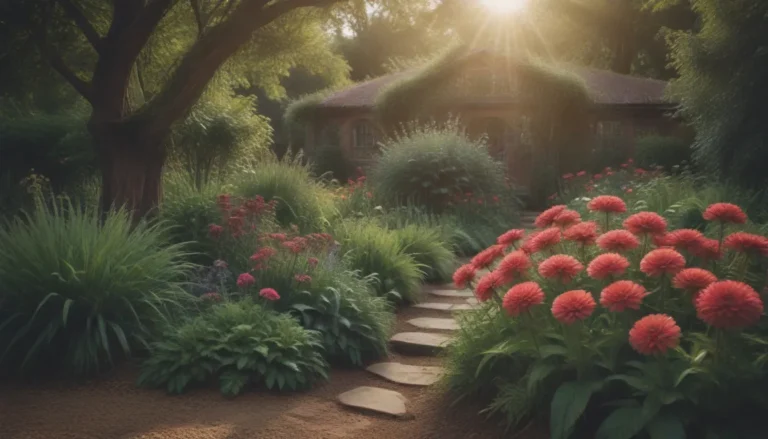The Ultimate Guide to Growing and Caring for Sweet Woodruff

Sweet woodruff, also known as sweetscented bedstraw, is a delightful perennial with charming flowers that make it a popular choice as a ground cover in shady areas. This plant requires minimal sunlight, making it an excellent option for those dark corners of your garden. With its spreading nature, it can quickly fill in a space with its lush greenery. Today, we are going to delve deeper into how to grow and care for this lovely plant to help you make the most of its beauty in your garden.
Sweet Woodruff Care Guide
Sweet woodruff is relatively easy to care for, but there are a few key considerations to keep in mind to ensure it thrives in your garden. Let’s take a closer look at the care requirements for this charming plant:
Light
Sweet woodruff prefers full to partial shade, making it ideal for planting under trees or in areas with limited sunlight. Excessive exposure to the sun, especially during the hottest parts of the day, can damage the delicate leaves of the plant.
Soil
This plant is adaptable to a variety of soil types, but it thrives in well-draining, slightly acidic soil. While it can tolerate different soil conditions, it performs best in rich, loamy soil. Whether you have clay or sandy soil, sweet woodruff can still flourish with proper care.
Water
Sweet woodruff thrives in moist to wet soil conditions but can also withstand periods of dryness. To prevent it from spreading too aggressively, only water the plant during prolonged droughts. Finding the right balance in watering will help maintain its growth without overpowering other plants in your garden.
Temperature and Humidity
This plant adapts well to various climate conditions within its hardiness range. In hot temperatures, sweet woodruff may go dormant temporarily, but it will bounce back once the conditions moderate. It can even thrive in slightly colder climates, showcasing its resilience.
Fertilizer
Generally, sweet woodruff does not require regular feeding. However, a newly planted specimen may benefit from an all-purpose fertilizer to help it establish in poor soil conditions. Always follow the product label instructions for the correct application.
Pruning Sweet Woodruff
While sweet woodruff loves to spread, pruning is not necessary. However, if you prefer to control its growth, periodic pruning can help contain the plant within a specific area. Thinning out the plant can also prevent it from becoming too dense in your garden.
Propagating Sweet Woodruff
Propagating sweet woodruff is relatively easy and can be done through division by digging up sections of the plant. Opt for well-established sections that have had a couple of years to grow. Spring or fall is the best time for propagation to give the plant ample time to establish itself.
Growing Sweet Woodruff from Seed
While sweet woodruff can be grown from seed, root division is a more popular method due to its simplicity and effectiveness. However, if you prefer to start from seed, it is certainly an option to explore for a fun gardening project.
Overwintering Sweet Woodruff
In colder climates, sweet woodruff tends to go dormant in winter and revive in spring. To protect the plants during the winter months, consider mulching the area to provide insulation and safeguard them from harsh weather conditions.
Common Pests and Plant Diseases
Sweet woodruff is known for its pest-repellent properties, making it a beneficial addition to your garden. While it is relatively resistant to pests and diseases, occasional issues like powdery mildew can arise. In such cases, promptly remove affected areas and consider using organic solutions like neem oil for management.
Encouraging Sweet Woodruff to Bloom
While sweet woodruff requires minimal care to bloom, a little extra attention can boost its flowering potential. Here are some tips to encourage more blooms from your sweet woodruff plant:
Bloom Months
Sweet woodruff typically blooms in the spring, usually around May, adding a beautiful touch to your garden landscape.
Flower Characteristics
The star-shaped, white flowers of sweet woodruff emit a delightful fragrance reminiscent of freshly mown hay and vanilla. Their appearance and scent make them a charming addition to any garden.
Optimal Growing Conditions
Consistent moisture and a bit of light can enhance the flowering performance of sweet woodruff. Consider adjusting your watering schedule or relocating the plant to a slightly brighter spot for more abundant blooms.
Post-Blooming Care
After the blooming period, sweet woodruff does not require specific care. If you plan to harvest the foliage or flowers for their fragrance, this is the perfect time to do so to capture their aromatic essence.
Deadheading
Unlike some plants, sweet woodruff does not need deadheading to promote additional blooming. The fragrant white flowers attract beneficial insects like butterflies and bees, adding to the charm of your garden.
Companion Plants and Additional Uses
Sweet woodruff complements a variety of companion plants, including hostas, bleeding hearts, and rhododendrons. You can also harvest and dry the foliage to enhance its aromatic properties, using it in various decorative arrangements such as sachets, potpourris, or wreaths.
With its rapid spreading nature, sweet woodruff can quickly cover an area if left unchecked. By strategically pruning and containing its growth, you can enjoy the beauty of this plant without it overpowering your garden space.
In conclusion, sweet woodruff is a versatile and charming plant that can thrive in diverse conditions with minimal care. Whether you’re a novice gardener or a seasoned enthusiast, incorporating sweet woodruff into your landscape can add a delightful touch to your outdoor space. With the right care and attention, this plant can reward you with its lovely flowers and fragrant foliage year after year. So, why not give sweet woodruff a try in your garden and enjoy its beauty for seasons to come!





